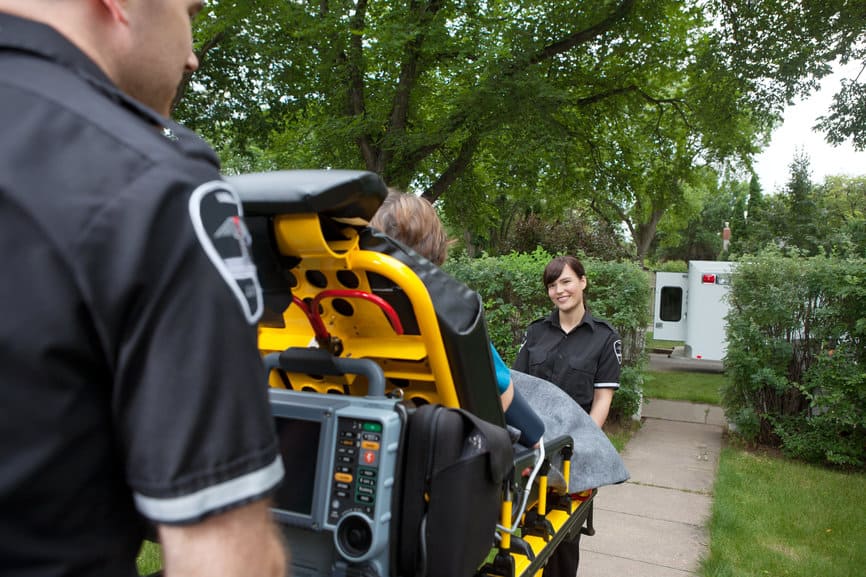
I walked into the doorway of the psych interview room. Standing near the partially open door, carefully choosing my words, I made it clear to the patient and his girlfriend that no, we would not be admitting him to the hospital as he did not have withdrawal symptoms requiring a hospital bed.
I had already given him the option of going to the local detox, which he adamantly refused. He didn’t take the news well: he jumped up out of his chair and started to move aggressively toward me as I backed out the partially open door.
As he charged forward through the doorway, suddenly his demeanor changed. Surprise registered on his face when he saw the two large burley security guards standing in the hallway just outside the door. His energy immediately deflated and he turned and walked out of the hospital, accompanied by his girlfriend who was bitterly yelling expletives on the way out.
I didn’t generally have security guards follow me around the ED – this case was different. Because of the nature of the patient’s complaint of drug use, presentation, and social dynamic with his girlfriend who didn’t want him to stay with her anymore, I suspected this might be a problematic and potentially dangerous encounter.
Initially, I went in the room by myself, leaving the door open. That particular room had a panic alarm embedded in the wall which I could activate if needed. I had never had to use it, as I could usually diffuse the situation or at least step out and get help if I thought I would need it.
It became apparent to me that the patient and his girlfriend were asking for something I couldn’t provide. There was no option except to ask them to leave. They became very agitated and verbally abusive when I discussed detox. I told them I would check on something and come back. What I wanted to check on was that security was available. I then had security wait out of sight, just in case.
EMTs sometimes find themselves in situations where they are potentially at risk. Remember your safety is paramount. You can not help anyone if you yourself become a patient. Be aware of the situation. Keep a ready escape access, and don’t put the potentially violent patient between you and the door.
Make sure the scene is safe with no weapons present, before you enter. If a scene suddenly becomes unsafe, police can be called to assist. It is not your job to wrestle, disarm, or fight with anyone. You should always call in help if you are in danger or feel threatened by a patient.
I had already given him the option of going to the local detox, which he adamantly refused. He didn’t take the news well: he jumped up out of his chair and started to move aggressively toward me as I backed out the partially open door.
As he charged forward through the doorway, suddenly his demeanor changed. Surprise registered on his face when he saw the two large burley security guards standing in the hallway just outside the door. His energy immediately deflated and he turned and walked out of the hospital, accompanied by his girlfriend who was bitterly yelling expletives on the way out.
I didn’t generally have security guards follow me around the ED – this case was different. Because of the nature of the patient’s complaint of drug use, presentation, and social dynamic with his girlfriend who didn’t want him to stay with her anymore, I suspected this might be a problematic and potentially dangerous encounter.
Initially, I went in the room by myself, leaving the door open. That particular room had a panic alarm embedded in the wall which I could activate if needed. I had never had to use it, as I could usually diffuse the situation or at least step out and get help if I thought I would need it.
It became apparent to me that the patient and his girlfriend were asking for something I couldn’t provide. There was no option except to ask them to leave. They became very agitated and verbally abusive when I discussed detox. I told them I would check on something and come back. What I wanted to check on was that security was available. I then had security wait out of sight, just in case.
EMTs sometimes find themselves in situations where they are potentially at risk. Remember your safety is paramount. You can not help anyone if you yourself become a patient. Be aware of the situation. Keep a ready escape access, and don’t put the potentially violent patient between you and the door.
Make sure the scene is safe with no weapons present, before you enter. If a scene suddenly becomes unsafe, police can be called to assist. It is not your job to wrestle, disarm, or fight with anyone. You should always call in help if you are in danger or feel threatened by a patient.


